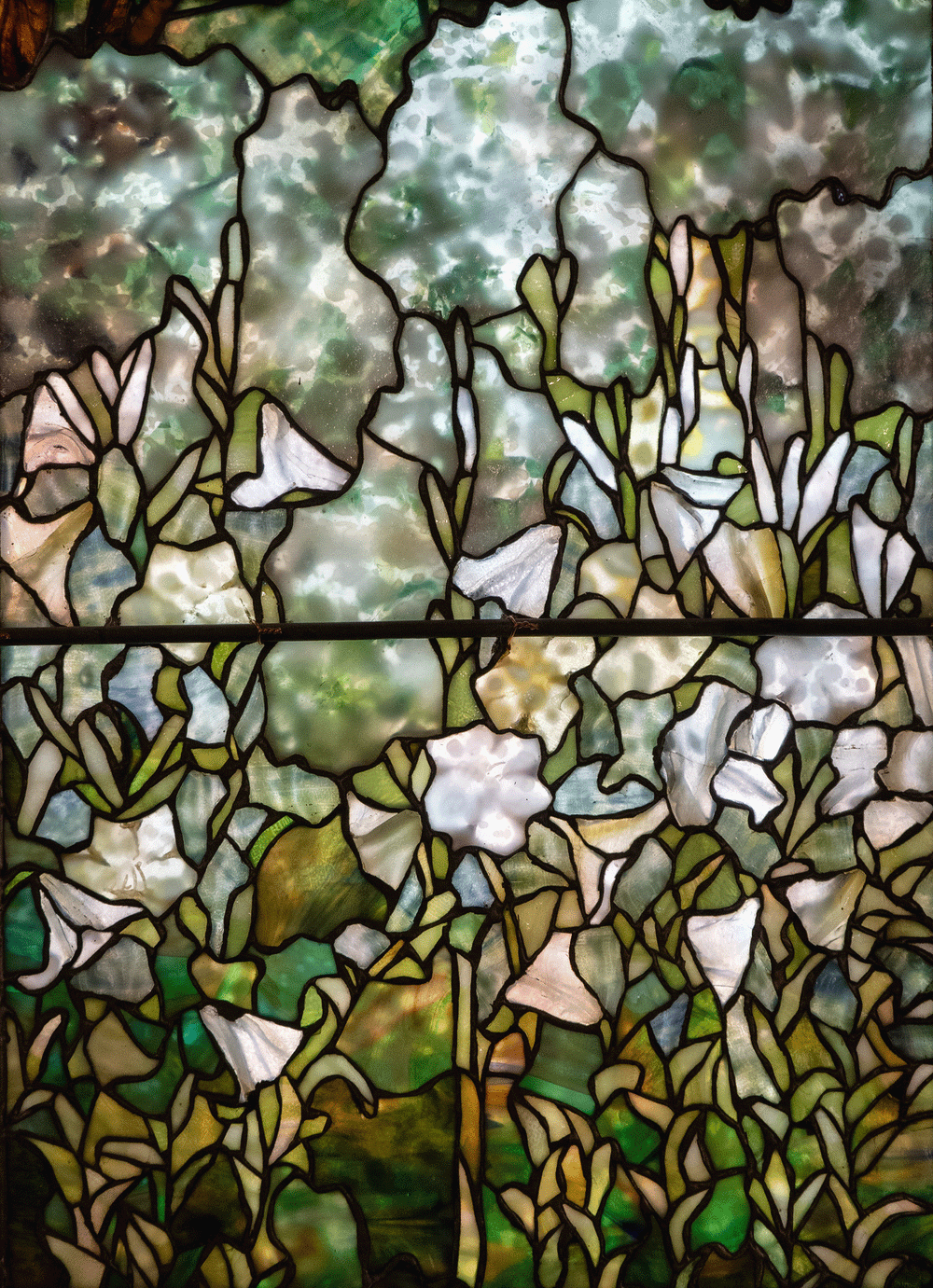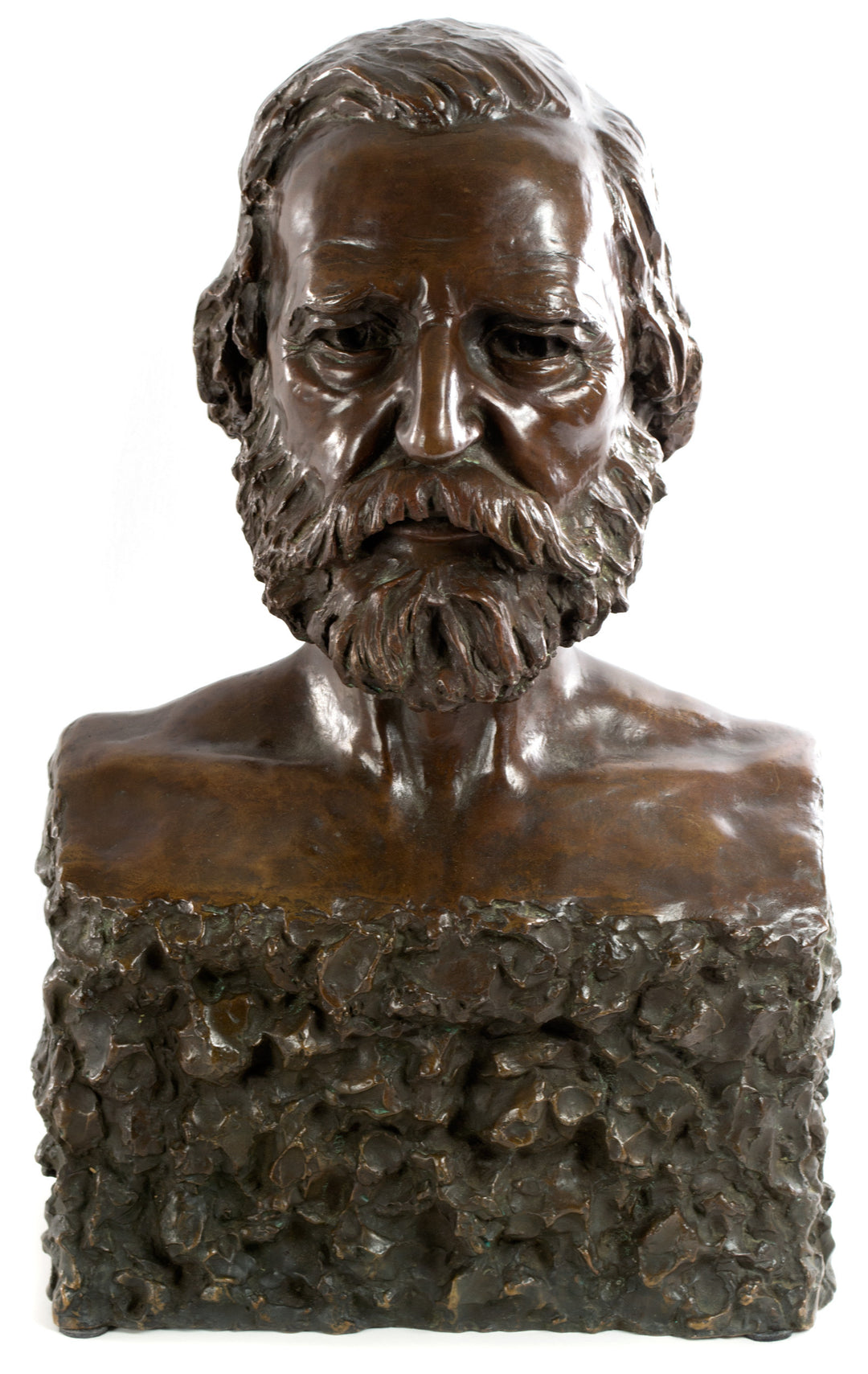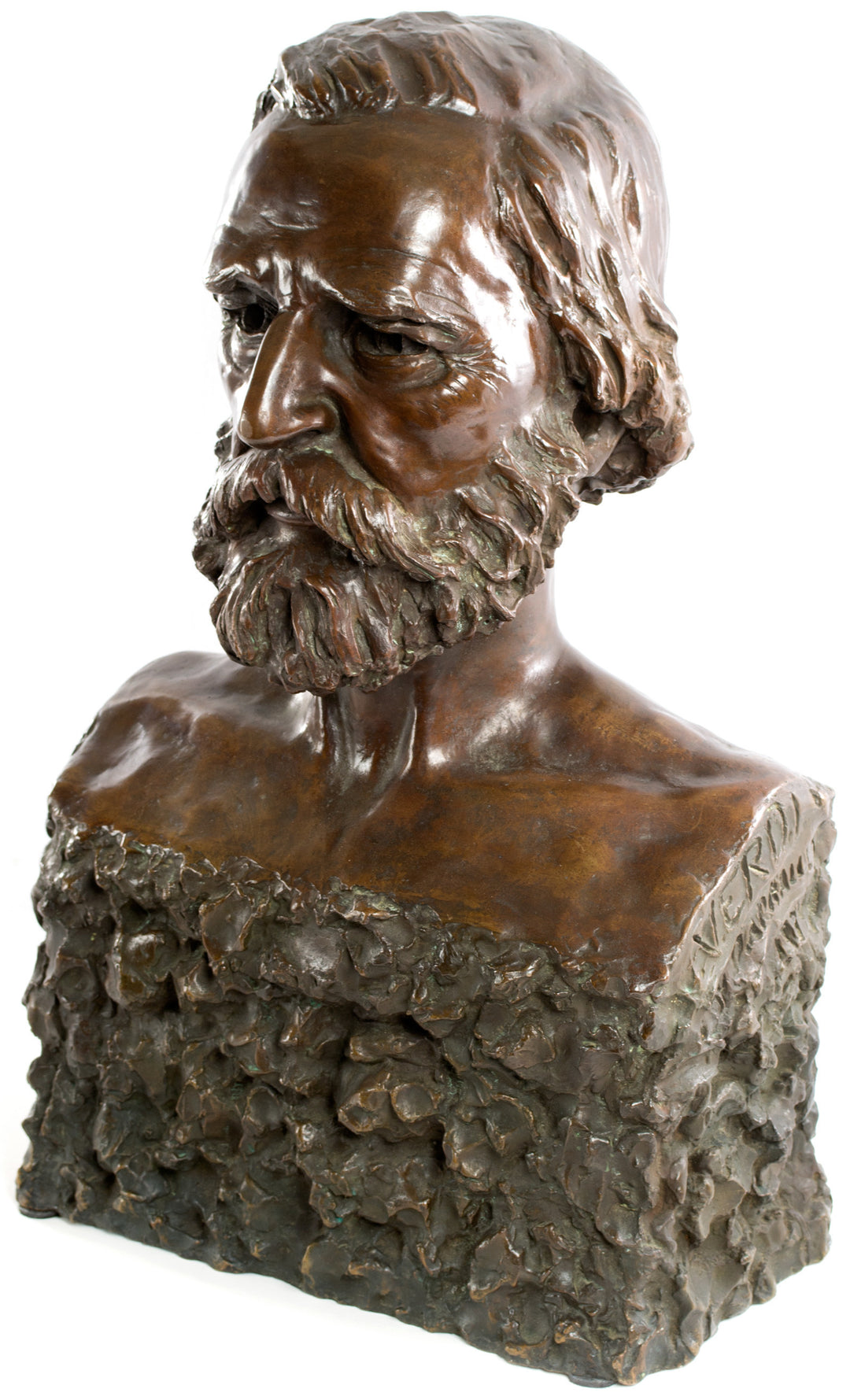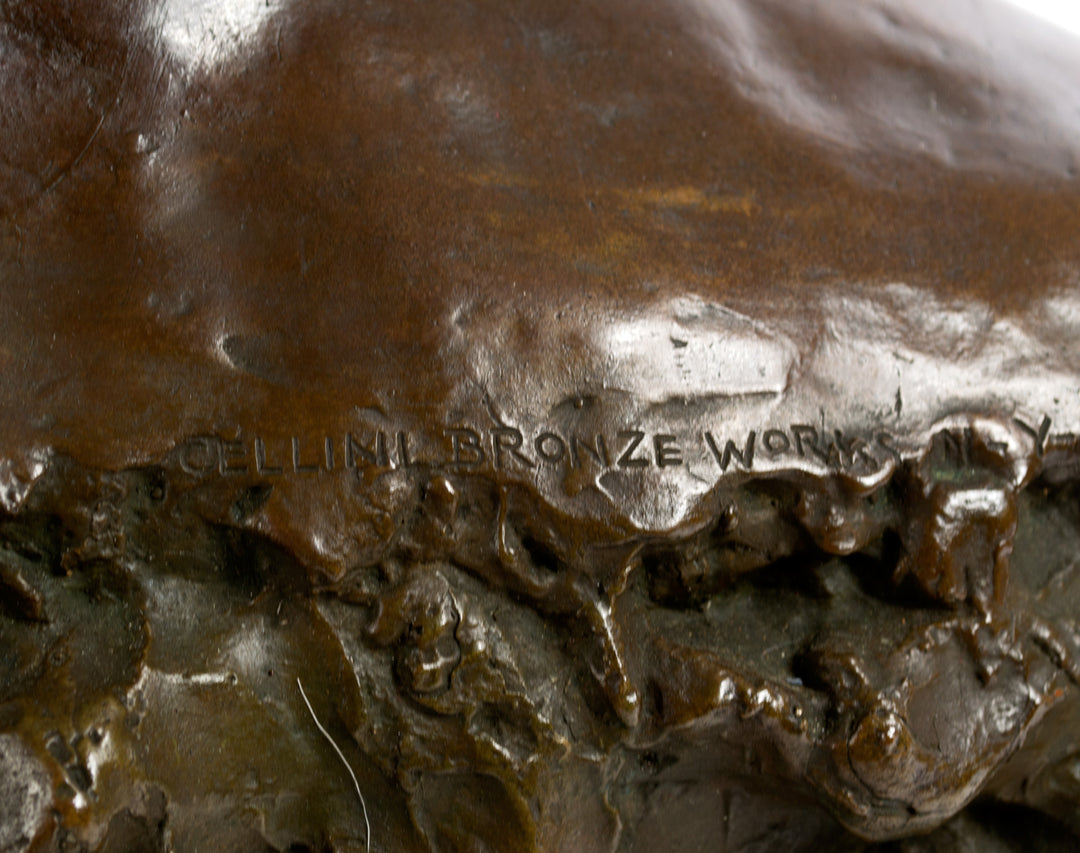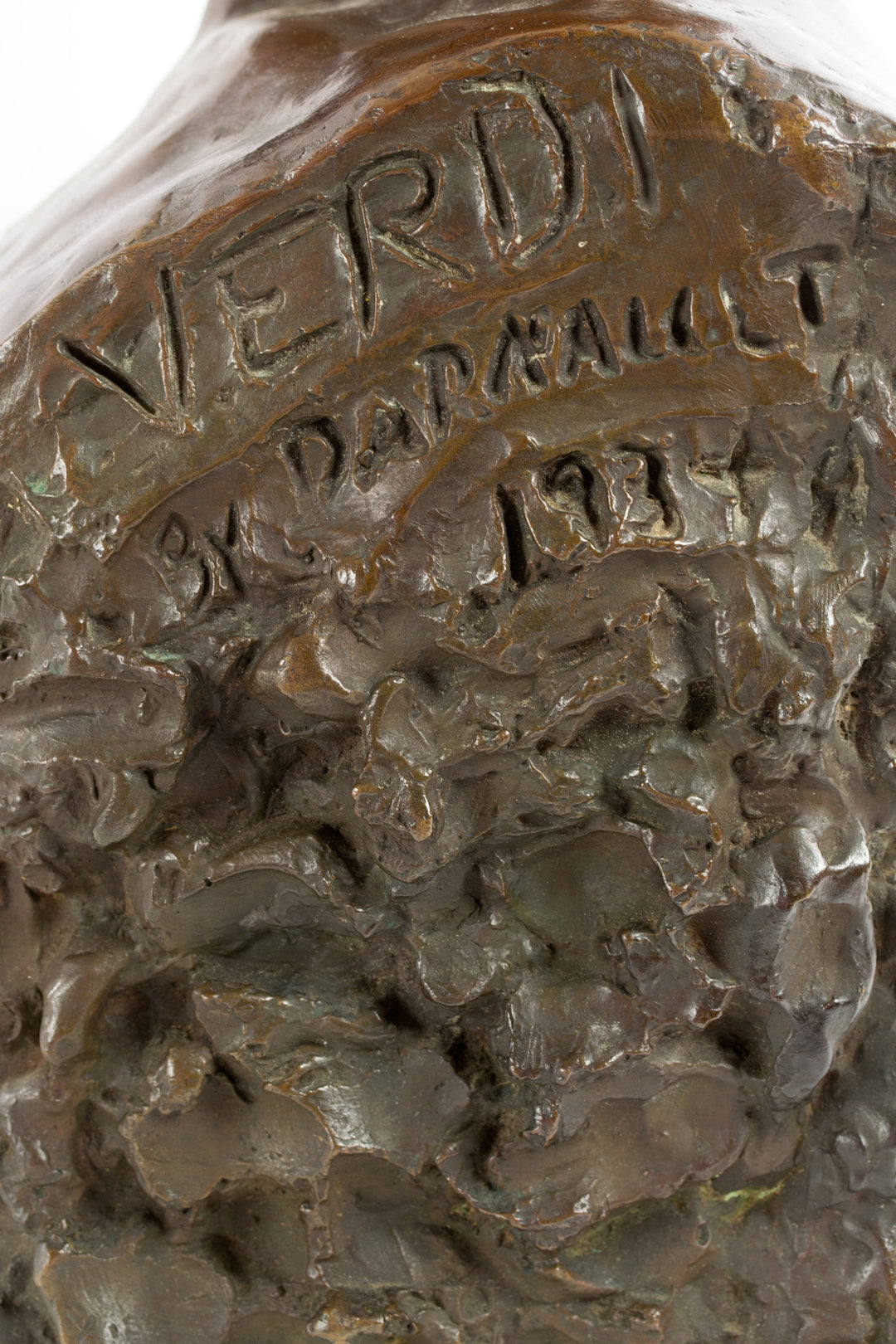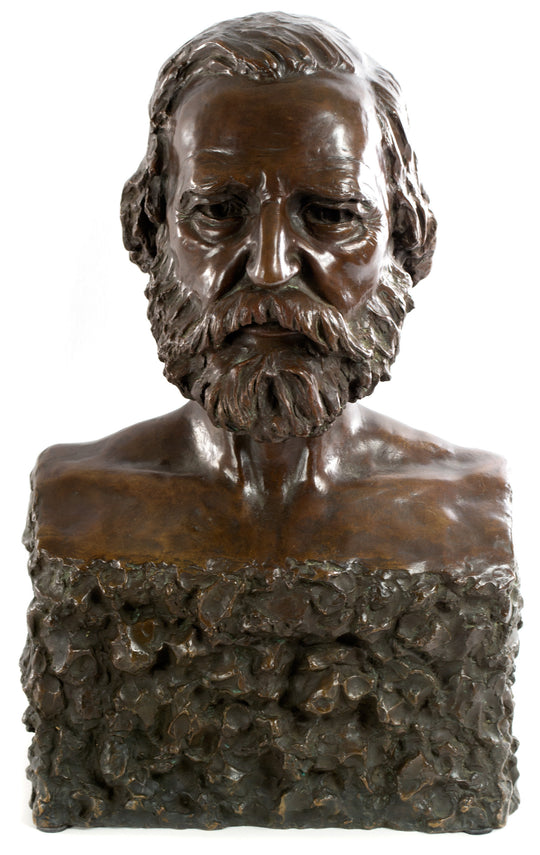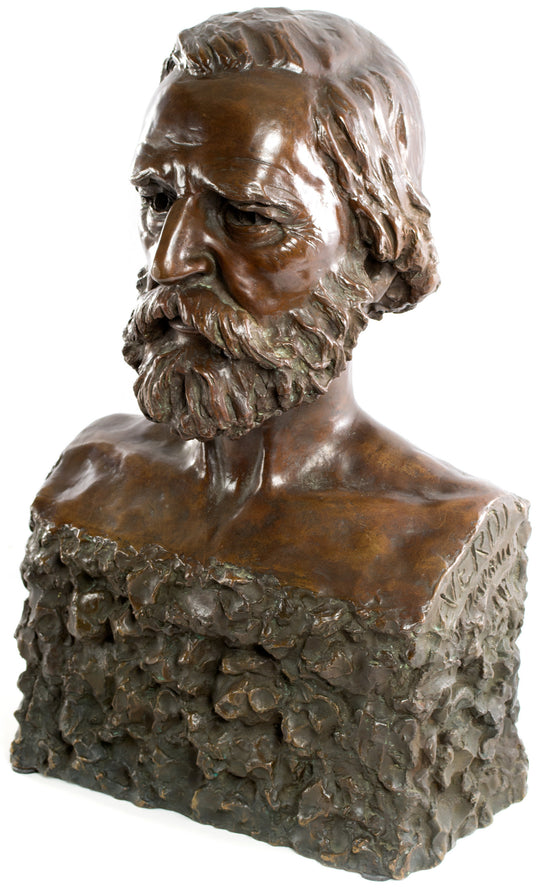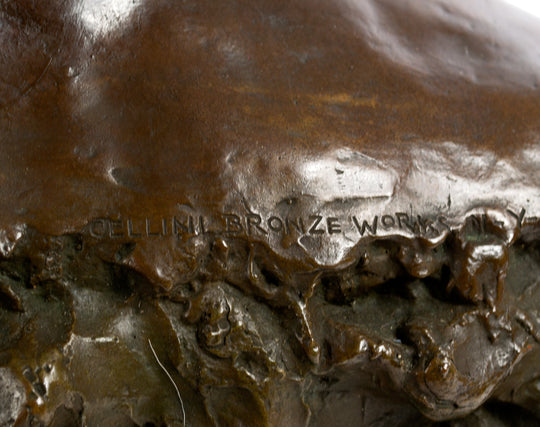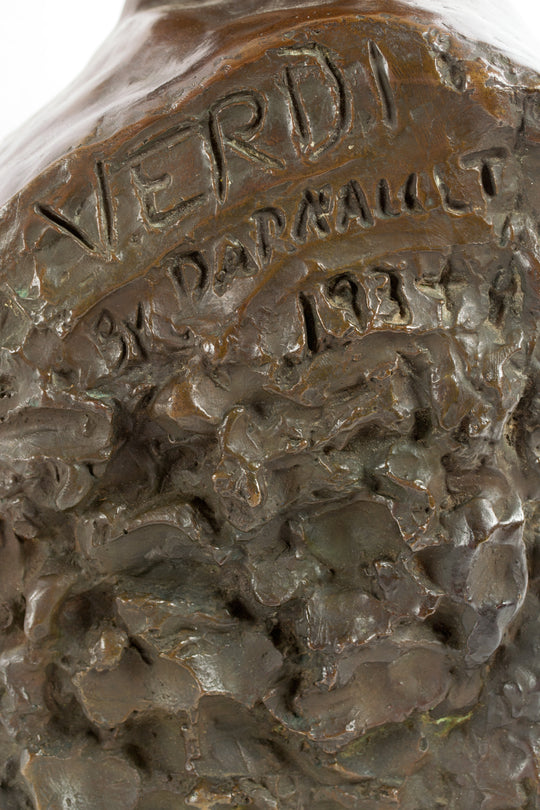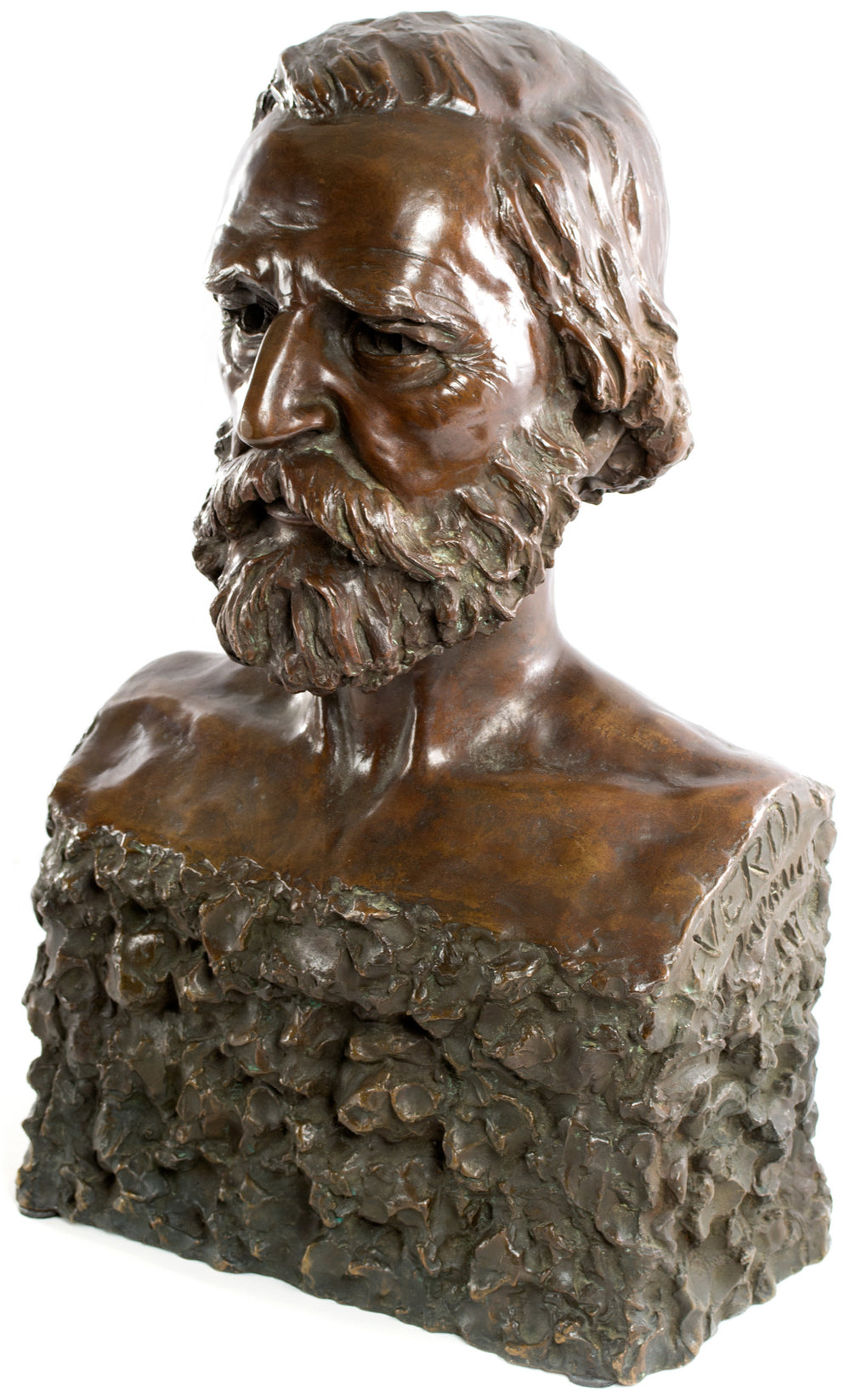The Composer Giuseppe Verdi (1934) by Florence Malcolm Darnault
"A bust of Giuseppe Verdi, opera composer, was unveiled yesterday in the grand ballroom of the Plaza Hotel in the presence of 300 persons. The bust is the work of Florence Darnault, American sculptor. It was accepted from Miss Darnault by Mrs. Florence Jenkins, president of the Verdi Club. Among those present were Agostino de Biasi, Italian author, who unveiled the bust; Arturo Toscanini, Baroness Katherine Evans von Klenner, President of the National Opera Club; Antonio Grosardi, Italian Consul General . . ."
-The New York Times, 18 January 1934
This sculpture was destined as the centerpiece of the Verdi Club in New York, established by Florence Foster Jenkins. Missing for nearly 80 years, the bust was rediscovered by Anthony’s Fine Art & Antiques (Salt Lake City).The circumstances of its commission and public reception reveal an embarrassing secret about Jenkins and the probable cause for her famously bad singing.
At the height of the Depression, Florence Foster Jenkins, daughter of a banker and wife of a Civil War hero, opened the opulent Verdi Club, located at 781 Madison Avenue. It was frequented by New York’s rich and powerful, who visited in the dining hall and heard private performances by luminaries of the musical world.
Jenkins, an amateur singer, used the club for recitals and lavish tableaux vivantes. She released several self-published records and performed at Carnegie Hall. Despite being regularly derided by critics for her lack of ability, the irrepressible Jenkins said: “People may say I can’t sing, but no one can ever say I didn’t sing.”
In anticipation of a visit from the celebrated conductor Arturo Toscanini, just returned from a tour of Italy, Jenkins commissioned the artist Florence Malcolm Darnault to create a bust of the club’s namesake, the composer Giuseppe Verdi.
Darnault had gained a great deal of attention as a student at Radcliffe College, the National Academy of Design, Art Students League, and as a pupil of Daniel Chester French. For her depiction of the Italian composer, Darnault chose a combination of heroic classicism and modern sensibility, with Verdi in the nude and a textured base that appeared to be rough stone.
At its unveiling it was hailed as a triumph by a critic for the New York Times:
Since seeing it I have felt that there is hope for American art . . . that America is really coming into an art of its own, for the sculptor appeared young and represented today. If that is the art of today, then we are having a great day.”
The critical success of the sculpture led to a series of commissions for Darnault, including monuments for Harvard University, New York University, and the US Army.
Yet, the evening the statue was shown, Darnault unwittingly revealed an embarrassing truth about Jenkins, who then refused to pay for the work. In a series of interviews during the early 1970s, Darnault recounted the encounter in her own words:
I was excited. It was going to be a very nice unveiling and a lot of people were there who were friends of mine. They came and told me to come onstage right away because they were going to have the unveiling and I said:
‘Well, where is Mrs. Jenkins?’
‘She’s in that room there.’
I went off the stage and there’s the room where people get ready. I opened the door and looked in and there she was. Half naked. Sitting there without a thing on and her wig was sitting there alongside on the table. She was completely bald. Completely shiny. I just couldn’t believe it. But completely shiny. She was polished. I was so embarrassed because I’d seen it and now she knew it. She saw me in the mirror. She gave a yell . . . I never said a word about it.”
According to Jasper Rees, author of the book Florence Foster Jenkins: The Inspiring True Story of the World’s Worst Singer, the baldness was the result of a disastrous medical treatment. Jenkins’ late husband, Frank Thorton Jenkins, had been a philanderer who gave his wife syphilis. The disease affected both her ability to produce and hear sound. As treatment, a doctor has prescribed high enough levels of mercury to cause permanent baldness. “Florence, having recovered from Darnault’s visit to her dressing room, attended a reception and. . . Darnault was never paid for her sculpture” wrote Rees.
Darnault kept the bust for her private collection, making no known copies. From the time of her death in 1978, its whereabouts have been unknown until it was purchased from a private collection by Anthony’s Fine Art & Antiques. “The owner, like me, appreciated it because of its association with the composer. Neither of us had any knowledge of Florence Malcolm Darnault, let alone its relationship to Florence Foster Jenkins and the Verdi Club,” said Dr. Micah Christensen of Anthony’s Fine Art. “Then, I was reading through the Sunday Times of London and saw an article by Jasper Rees, who mentioned that ‘a sculptress’ had discovered Jenkins’ baldness and was not paid for her work.” Christensen, an art historian, contacted Rees and confirmed it was the same sculptor and work.
“While I am happy that the work has a connection to Jenkins, a fascinating and tragic character, I am more excited that it brings attention to the other Florence: Florence Malcolm Darnault. She was is a forgotten master, recognized in her time, who deserved to be rediscovered,” says Christensen.
26 ½ x 16 ½ x 12 in.


